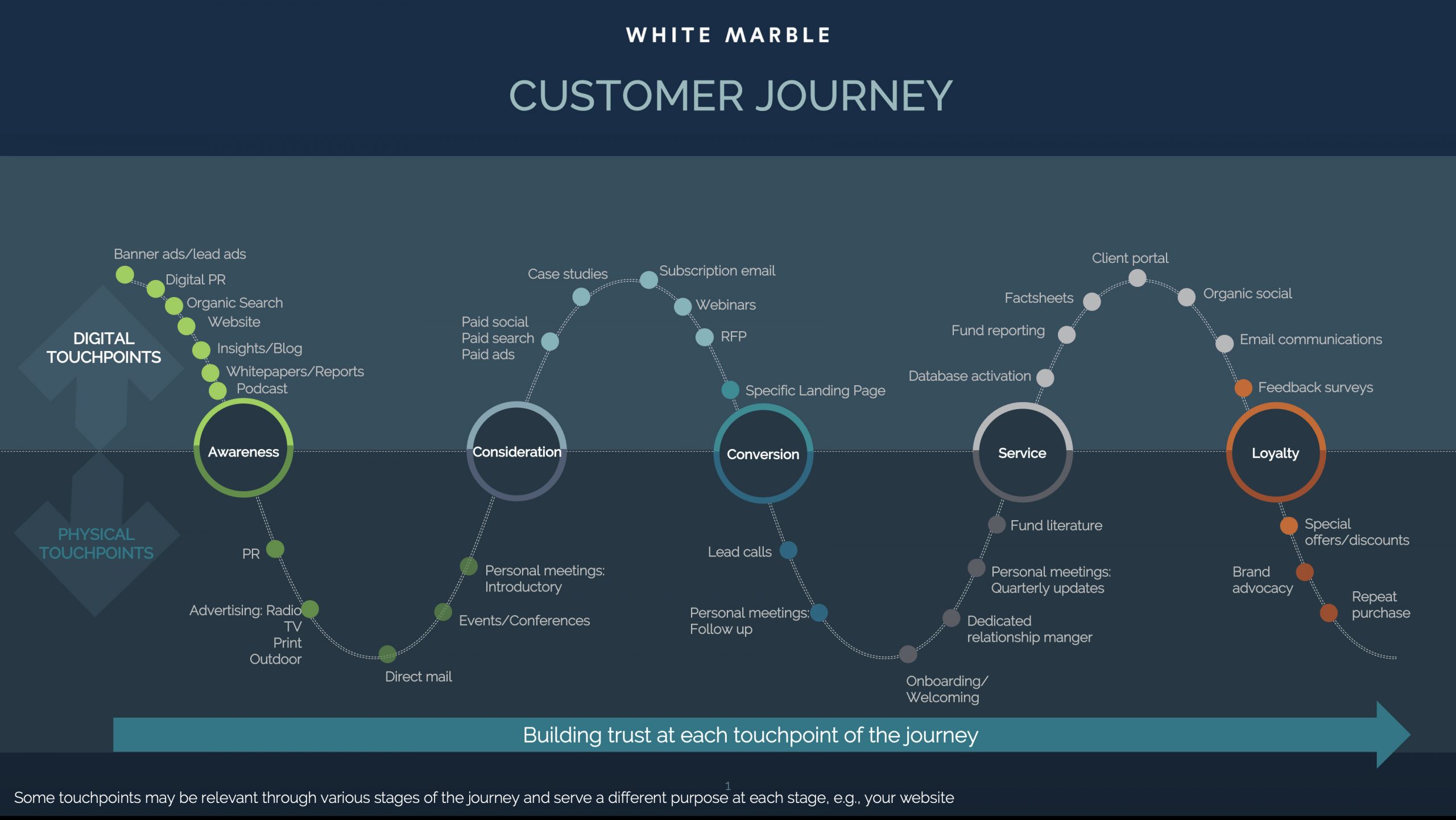When Talking Heads released Road to Nowhere in 1985, I can safely say they were not predicting the future ability for marketers to map their customers’ journey. Nor how marketers might track digital footprints or gain insights on behaviours and decision-making processes through multiple clicks of a button. Listening to the lyrics retrospectively, it could change your mind.
Whilst the internet had officially launched by then and a few million computers were being used around the world, it was a far cry from where we are today. In this digital era, there are more touchpoints (places of customer interaction) than ever thanks to evolving digital media channels. As a result, the traditional marketing funnel has evolved too and is seen as ‘the customer journey’ or a multitude of interconnected journeys. Gartner (a technology research and consultancy company) defines it as “a variety of touchpoints by which the customer moves from awareness to engagement and purchase.” Successful brands, no matter the industry, focus on developing a seamless experience where each touchpoint interconnects and contributes to the overall customer journey.
Be fascinated by your customer, not technology
The fundamental purpose of marketing is and will always be to understand, create and communicate value for customers. This has not and will not change. However, using digital technology to enable this has.
Successful global companies, such as Amazon, focus on solving customers’ challenges and addressing their needs. Instead of asking customers what they want, they ask about their challenges and problems. They therefore know their customers better than anyone through continuously gathering data and insights which inform product innovation, buying behaviour and learnings on creating value. Customer-centricity is the key to gaining both satisfied and loyal customers.
Traditional sales and marketing models are rapidly evolving thanks to this enhanced digital ability to better understand customer needs. The asset management industry, as with all other industries, needs to continue investing in technology platforms and sales enablement tools to help stay ahead of the curve. With this comes the need for developing the internal skillset required to navigate these shifts and build in customer-centricity. Each customer’s journey is different, so mapping and understanding their behaviours is paramount.
Map the touchpoints, shape the experience
Whilst the journey a customer takes is the overall experience, each touchpoint gives the organisation an opportunity to change perceptions and express their brand. The toolkit available to marketers to do this has expanded, even in heavily regulated industries like financial services. There is more opportunity than ever before to reach prospects with thought-provoking content and messaging.
(click image to enlarge)
Above is an example customer journey highlighting our thinking at White Marble Consulting, including both digital and physical touchpoints and how trust builds at every stage. Below is a breakdown of each phase.
- Awareness – In this stage you are showing your audience who you are, what you stand for and how you can add value to them. You are reaching your customer through multiple touchpoints, such as your website, press coverage, advertising, social media, and events.
- Consideration – After establishing awareness, you are informing and educating your customer on the benefits of your products and services. Content plays a key role at this stage of gentle persuasion. Share case studies, offer webinars and product trainings sessions to deepen customer understanding.
- Conversion – Your customer has evaluated their alternatives and made the decision to invest, after which the onboarding process begins.
- Service – In this nurture phase you are building a relationship with your customers and providing them with the tangible benefits and value you offer. You understand your customers’ challenges further and help them by delivering robust solutions. In a relationship-based industry where trust is paramount, there are multiple opportunities throughout the journey to gain trust and deepen the relationship.
- Loyalty – Post-purchase the journey is not over. The aim is to cultivate a strong relationship with customers, build loyalty and encourage repeat business. At this stage you are measuring customer satisfaction and establishing advocacy for your brand.
Mapping out the customer journey and effectively integrating this into your marketing and communications strategy will result in a better experience for your customers. It is as simple as that. It also means that, over time, your customers will take the road back to you.
“Well, we know where we’re goin’
But we don’t know where we’ve been
And we know what we’re knowin’
But we can’t say what we’ve seen”
Try not to sing along, I dare you!
